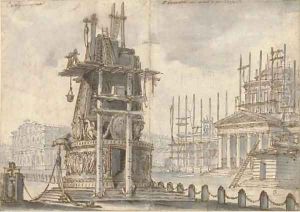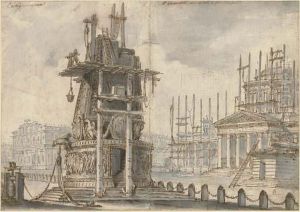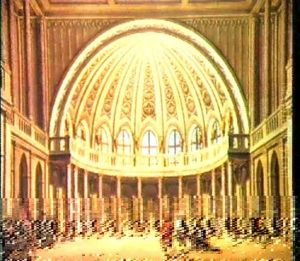Bernardino Galliari Paintings
Bernardino Galliari was an Italian painter and set designer, primarily known for his work in creating theatrical scenery. Born on October 16, 1759, in Mondovì, Piedmont, Italy, he was part of a family of artists that included his brothers Fabrizio and Gabriele Galliari, both of whom also gained recognition for their artistic endeavors.
Galliari received his early art education from his family before moving to Turin to further his studies. His work was profoundly influenced by the Baroque tradition, and he became particularly adept in the creation of dramatic and grandiose scenes, which made him a natural fit for the world of theater. Throughout his career, he worked for various theaters in Italy, including the Teatro Regio in Turin and La Scala in Milan, where his innovative and captivating stage designs were highly acclaimed.
Bernardino Galliari's expertise in perspective and his ability to create the illusion of depth and space were instrumental in the development of modern scenography. His painted backdrops and elaborate set pieces were characterized by their realistic portrayal of architectural elements and natural landscapes, which transported audiences to other times and places.
Apart from his theatrical work, Galliari also produced frescoes and paintings for churches and palaces. His religious works and frescoes can be found in various locations in Piedmont, including the Church of San Lorenzo and the Palazzo Lascaris in Turin, showcasing his versatility and command over different artistic mediums.
Galliari's contributions to the world of set design and his influence on the visual aspects of theater were significant, and his works continued to inspire future generations of scenographers. He passed away on February 25, 1823, in Turin, leaving behind a legacy as one of the prominent set designers of his time. His death marked the end of an era in Italian theater, but his innovative approaches to stagecraft and his artistic achievements have secured him a place in the annals of art history.






